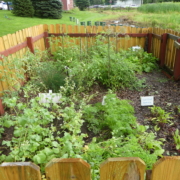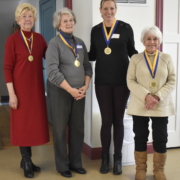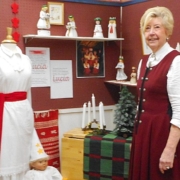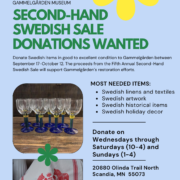Thank You to Gammelgården’s Gardening Team Volunteers and Washington County Master Gardeners
Seeing the colorful flower gardens and historic heirloom gardens at Gammelgården adds another dimension to visitors’ museum experience at Gammelgården.. Eye-catching flowers, blossoms, colorful vegetables, and fragrant herbs all vie for attention.
The gardens are a highlight for the thousands of visitors from Minnesota and around the world who visit the museum to see what it would have been like for a Swedish immigrant in the mid- to late-1800s. Having such a wide variety of flowers, vegetables, and herbs would not be possible without the many hours donated by volunteers who work on the museum’s many gardens.
The flower gardens around the Welcome House, the southwest side of the Pastor’s House, and under the museum’s signs all have expanded this year with more colorful and annual perennials that will bloom throughout the season. In addition to the gardens, there are beautiful container gardens bursting with flowers along the walkway leading to the Welcome House and by some of the doors of the buildings.
Many thanks to Mary Pries-Morrison, Barb Lund, and other volunteers on the Garden Team who have devoted countless hours to making the museum’s grounds so beautiful this year. We also want to thank Abrahamson’s Nursery in Scandia and the Minnesota Green program (through the Minnesota Horticultural Society) for donating annuals and perennials to the museum this year.
In addition, we want to thank the Washington County Master Gardeners who revitalized the heritage vegetable garden, built a fence and created a sign for it, and planted a pollinator garden this year. According to the Washington County Master Gardeners, “Food traditions brought from Sweden included growing a variety of root vegetables, including rutabagas (kålrot) also known as Swedes. Carl Linnaeus, a Swedish botanist and physician, developed the taxonomy we still use today when classifying plants. He is credited with bringing the beloved rhubarb plant to Sweden. In the Heritage Garden, you will find it and many other traditional plants found in Swedish gardens. Gammelgården’s history extends well into the 20th century and the garden reflects how food choices changed over time and what was grown.”







